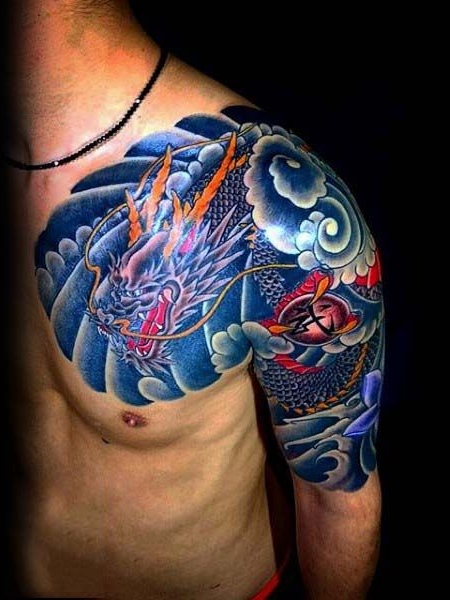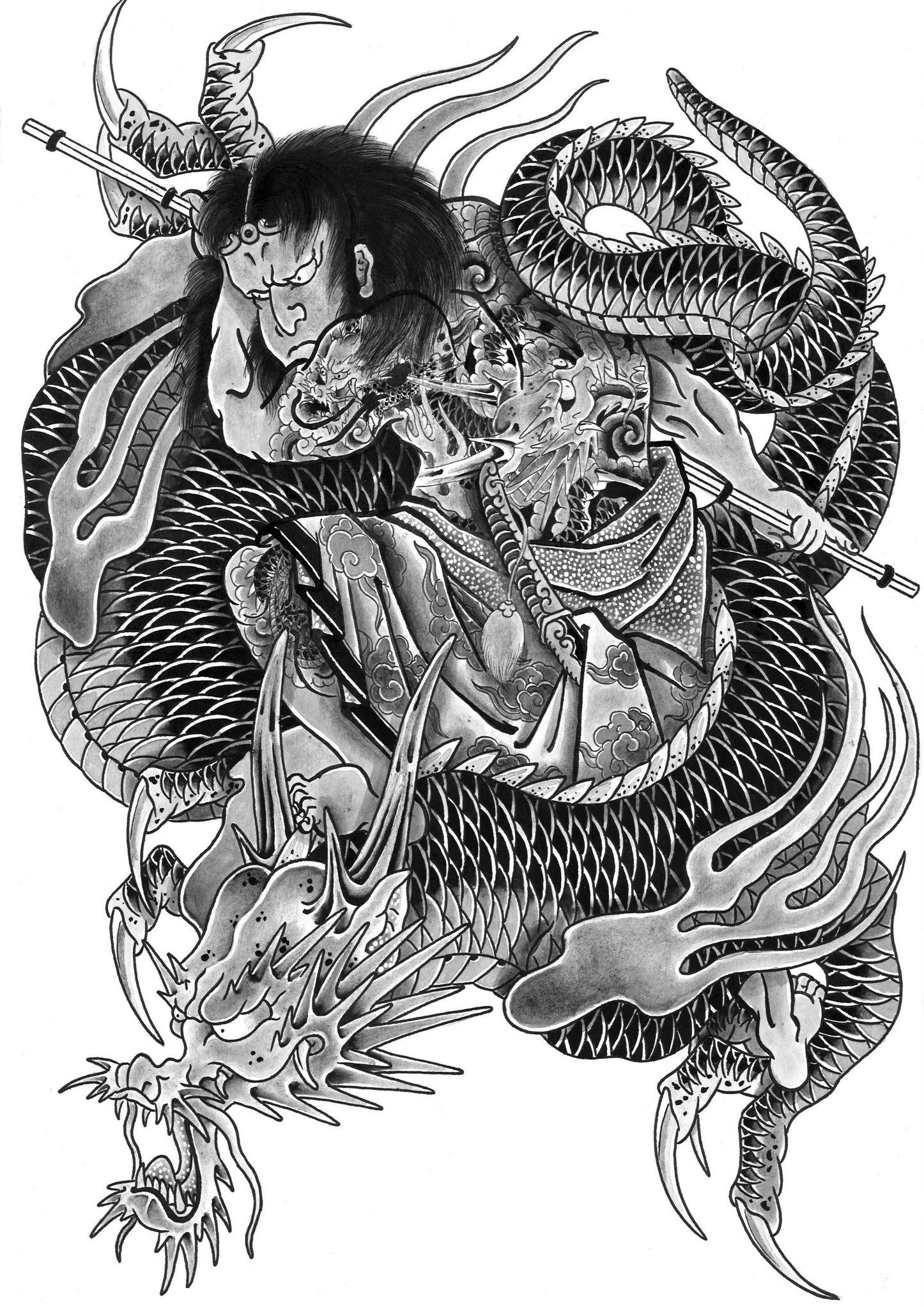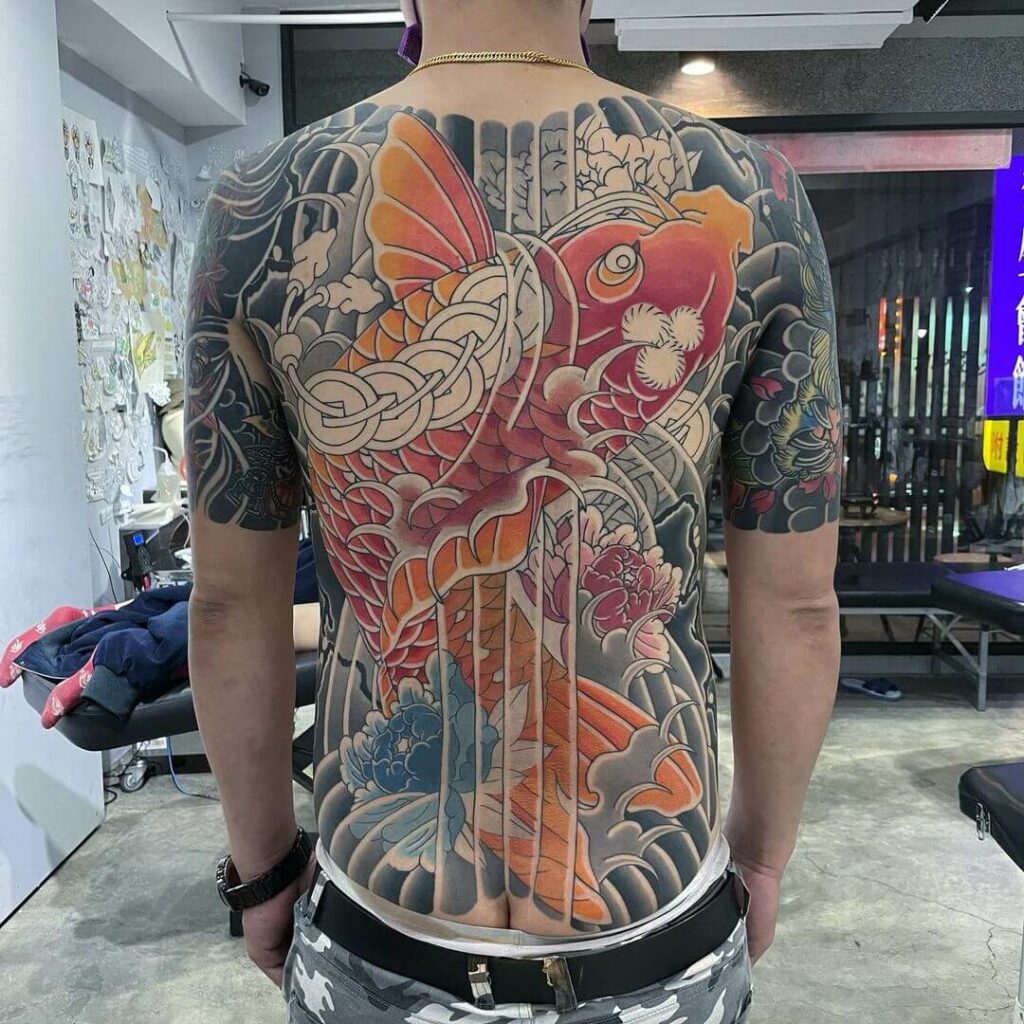Inspire Your Next Back Tattoo With Traditional Japanese Designs
Inspire Your Next Back Tattoo With Traditional Japanese Designs
Inspire Your Next Back Tattoo With Traditional Japanese Designs

Traditional Japanese tattoo designs are some of the most popular and recognizable in the world. With their bold colors, intricate detail, and rich symbolism, these tattoos are a beautiful way to express yourself and your personal beliefs. If you're considering getting a back tattoo, a traditional Japanese design is a great option.
In this blog post, we'll explore the history of Japanese tattooing, the different types of traditional Japanese designs, and the meaning behind some of the most popular symbols. We'll also provide some tips on finding a reputable artist and getting the best possible results.
History of Japanese Tattooing


The history of Japanese tattooing dates back thousands of years. The earliest evidence of tattooing in Japan comes from the Jomon period (10,000-300 BCE), when people tattooed their bodies with geometric designs. During the Yayoi period (300 BCE-300 CE), tattooing became more common, and it was used to identify criminals, slaves, and members of certain religious cults.

In the 8th century, Buddhism was introduced to Japan, and tattooing was outlawed by the government. This ban remained in effect for centuries, and tattooing was seen as a taboo practice. However, tattooing continued to exist in secret, and it was often associated with the Yakuza, the Japanese mafia.
In the late 19th century, tattooing was finally legalized in Japan, and it began to gain popularity among the general population. Today, Japanese tattooing is a thriving art form, and it is enjoyed by people of all ages and backgrounds.


Types of Traditional Japanese Tattoo Designs

There are many different types of traditional Japanese tattoo designs, each with its own unique meaning. Some of the most popular designs include:
- Irezumi is a type of full-body tattoo that covers the entire back, chest, and stomach. Irezumi is often associated with the Yakuza, and it is considered to be one of the most prestigious types of Japanese tattooing.
- Geisha girls are a popular subject for Japanese tattoos. These tattoos often depict geishas in traditional kimonos, with their hair done up in elaborate hairstyles.
- Dragons are another popular choice for Japanese tattoos. Dragons are seen as powerful and protective creatures, and they are often associated with good luck and prosperity.
- Tigers are also a popular choice for Japanese tattoos. Tigers are seen as fierce and majestic creatures, and they are often associated with strength and courage.
- Flowers are a common element in Japanese tattoos. Flowers represent beauty, nature, and renewal.
- Waves are another common element in Japanese tattoos. Waves represent the power of nature and the ever-changing flow of life.

The Meaning Behind Traditional Japanese Tattoo Designs

In addition to their aesthetic appeal, traditional Japanese tattoo designs also have a rich symbolism. The meaning of a particular tattoo design can vary depending on the context in which it is used. However, some of the most common meanings include:
- Strength
- Power
- Courage
- Good luck
- Prosperity
- Femininity
- Masculinity
- Nature
- Rebirth


Tips for Getting a Traditional Japanese Tattoo

If you're considering getting a traditional Japanese tattoo, there are a few things you should keep in mind:
- Do your research. There are many different styles of traditional Japanese tattooing, and not all artists are created equal. Before you commit to a tattoo, do your research and find an artist who specializes in Japanese tattooing and whose work you admire.
- Be prepared for a long-term commitment. Traditional Japanese tattoos are often large and complex, and they can take many hours to complete. Be prepared for a long-term commitment, and be patient as your tattoo progresses.
- Take care of your tattoo. Once your tattoo is finished, it's important to take care of it properly to ensure that it heals properly and lasts for years to come. This means following your artist's aftercare instructions carefully and avoiding activities that could damage your tattoo.


Getting a traditional Japanese tattoo is a big decision, but it can be an incredibly rewarding experience. With careful planning and a commitment to quality, you can create a beautiful work of art that will last a lifetime.

Traditional Japanese tattoo designs full back are a popular choice for those looking for a large, bold, and meaningful tattoo. With their intricate detail and vibrant colors, these designs can make a statement and draw attention to your body.
In this blog post, we will explore the history of Japanese tattooing, discuss the different types of traditional Japanese tattoo designs, and provide some inspiration for your next full-back tattoo.
The History of Japanese Tattooing

The history of Japanese tattooing dates back thousands of years. The earliest evidence of tattoos in Japan comes from the Jomon period (10,000-300 BCE), when people used tattoos to decorate their bodies. During the Yayoi period (300 BCE-300 CE), tattoos became more common, and they were often used to identify social status or religious beliefs.
In the 7th century CE, Buddhism was introduced to Japan, and tattoos became associated with criminals and outcasts. This negative association continued for centuries, and tattoos were banned in Japan in the 18th century.
However, in the late 19th century, tattoos began to make a comeback in Japan. This was due in part to the work of Horiyoshi I, a famous tattoo artist who helped to popularize traditional Japanese tattoo designs.


Today, Japanese tattooing is still a popular art form, and it is enjoyed by people of all walks of life. Traditional Japanese tattoo designs are often seen as a way to express oneself, and they can be a source of pride and strength.
Different Types of Traditional Japanese Tattoo Designs

There are many different types of traditional Japanese tattoo designs, each with its own unique meaning and symbolism. Some of the most popular types of designs include:


- Irezumi is a type of full-body tattoo that typically covers the entire back, chest, and arms. Irezumi designs are often very detailed and colorful, and they can tell a story or convey a message.
- Geisha tattoos are a type of tattoo that depicts geishas, who are traditional Japanese entertainers. These tattoos are often done in a delicate and feminine style, and they can be a beautiful way to honor the culture of Japan.
- Samurai tattoos are a type of tattoo that depicts samurai warriors, who were the elite military class in feudal Japan. These tattoos are often done in a bold and masculine style, and they can be a powerful way to show strength and courage.
- Tribal tattoos are a type of tattoo that is inspired by the traditional art of indigenous peoples in Japan. These tattoos are often done in a simple and geometric style, and they can be a way to connect with your heritage.
No matter what your personal style or interests are, there is sure to be a traditional Japanese tattoo design that is perfect for you.

Inspiration for Your Next Full-Back Tattoo

If you are considering getting a full-back tattoo, there are many things to consider. First, you need to decide what type of design you want. Do you want a traditional Japanese design? A geisha tattoo? A samurai tattoo? A tribal tattoo? Once you have decided on a design, you need to find an experienced tattoo artist who can bring your vision to life.
Here are some of our favorite traditional Japanese tattoo designs for inspiration:

- A full-back tattoo of a koi fish swimming through a waterfall. The koi fish is a symbol of strength, perseverance, and good luck. This design would be a great choice for someone who is looking for a positive and motivational tattoo.
- A full-back tattoo of a geisha with cherry blossoms in her hair. The geisha is a symbol of beauty, grace, and femininity. This design would be a great choice for someone who wants to celebrate their feminine side.
- A full-back tattoo of a samurai warrior in battle. The samurai is a symbol of strength, courage, and honor. This design would be a great choice for someone who wants to show their strength and determination.
- A full-back tattoo of a tribal design inspired by the indigenous peoples of Japan. This design would be a great way to connect with your heritage and show your pride in your culture.


These are just a few of the many possible designs for a traditional Japanese full-back tattoo. The possibilities are endless, so let your imagination run wild and create a design that is truly unique and personal to you.
Conclusion

Traditional Japanese tattoo designs are a beautiful and meaningful way to express yourself. If you are considering getting a full-back tattoo, we hope that this blog post has provided you with some inspiration and information.

Here are some additional tips for getting a traditional Japanese tattoo: .